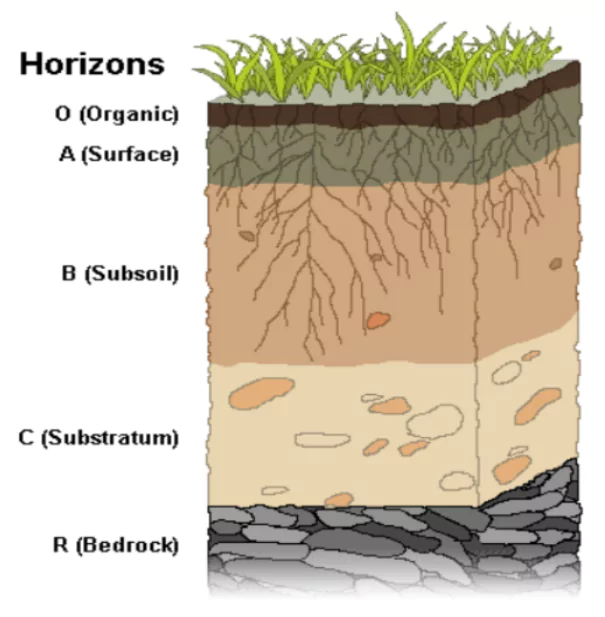![]() June 24, 2024
June 24, 2024
![]() 5365
5365
![]() 0
0
Understanding soil is crucial for agriculture and environmental sustainability. Soil, a mixture of rock debris and organic materials, forms layers known as horizons, each with distinct properties. Factors like parent material, climate, topography, biological activity, and time influence soil formation. Various types of soils, like alluvial, black, red and yellow, laterite, arid, saline, peaty, and forest soils, have unique characteristics and are found in different regions of India.
 Soil Horizon: The arrangement of layers of soil is known as the soil profile. Different layers in the soil profile are called Horizons.
Soil Horizon: The arrangement of layers of soil is known as the soil profile. Different layers in the soil profile are called Horizons.
| The Soil Survey of India was established in 1956. |
| Types | Characteristics | Found In |
| Alluvial Soils | Khadar and Bhangar types, enriched annually by floods, heavily cultivated, rich in potash and lime. | Found in Punjab, Haryana, UP, Bihar, West Bengal, Gujarat, Rajasthan, and deltas of major rivers. |
| Black Soil | Clayey, impermeable, known as ‘Regur Soil’, rich in lime, iron, and alumina. | Covers Deccan Plateau, parts of Maharashtra, Madhya Pradesh, Gujarat, Andhra Pradesh, and Tamil Nadu. |
| Red and Yellow Soil | Fertile, well-drained, red or yellow due to iron diffusion, generally deficient in nitrogen and phosphorus. | Found in Deccan Plateau, Odisha, Chattisgarh, and Middle Ganga Plain. |
| Laterite Soil | Formed in high temperature and rainfall areas, low humus, highly acidic, suitable for brick making. | Peninsular plateau, Karnataka, Kerala, Tamil Nadu, Madhya Pradesh, Odisha, Ranchi, and Assam. |
| Arid Soil | Sandy, saline, low humus, red to yellow in color. | Mainly in western Rajasthan. |
| Saline Soils | Salty, sandy to loamy, deficient in nitrogen, high in sodium and potassium | Arid, semi-arid, and waterlogged regions, deltas, and Sundarbans. |
| Peaty Soils | Heavy, black, high in humus and organic content. | Regions with heavy rainfall and high humidity, northern Bihar, southern Uttarakhand, coastal stretches of West Bengal, Odisha, and Tamil Nadu. |
| Forest Soils | Varying texture, acidic in snow-clad regions, fertile in lower valleys. | Found in forested areas with sufficient rainfall, Himalayan region, Western and Eastern Ghats, some parts of the Peninsular plateau. |
| Must Read | |
| Current Affairs | Editorial Analysis |
| Upsc Notes | Upsc Blogs |
| NCERT Notes | Free Main Answer Writing |
<div class="new-fform">
</div>
Latest Comments